August 2019
August 26, 2019
Mystery Object #9
What is this object? The answer is below in extended.
More in extended >>
Posted By: Alex - Mon Aug 26, 2019 -
Comments (4)
Category: Quizzes
Follies of the Madmen #441
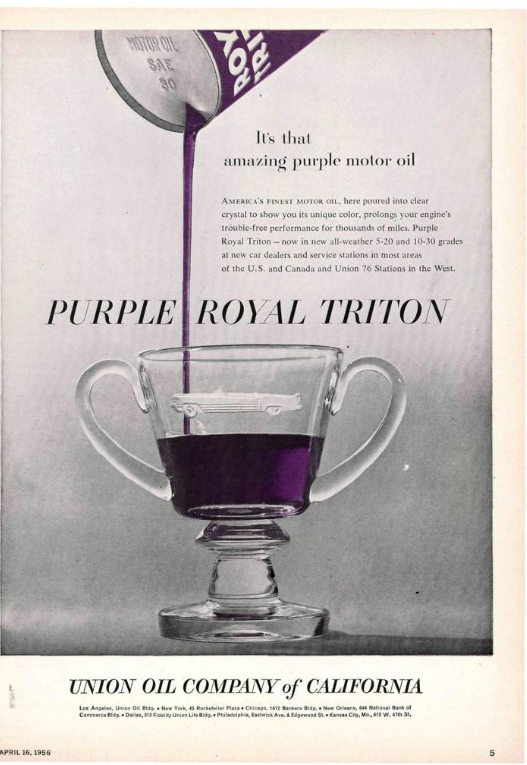
Not sure how a different color motor oil is better for your car. Don't think the advertiser can tell us either.
Source.
Posted By: Paul - Mon Aug 26, 2019 -
Comments (4)
Category: Business, Advertising, Motor Vehicles, 1950s
August 25, 2019
Quiet Village
You've probably heard Martin Denny's version of this song. It sold over one million copies.The song has the unusual distinction of having been played onboard the S.S. Nautilus as it became the first American submarine to cross the North Pole.
There's also an interesting back story about how Denny came to include all the animal and jungle noises in the song. According to Denny (via SoundMuseum.com):
We played at ‘Don the Beachcomber's’ on the beach of Waikiki and many of the soldiers stationed on Hawaii heard us and bought our records. When they were transfered, they took those records with them and played them for others. The name became famous through word of mouth: The Exotic Sounds of Martin Denny. The S.S. Nautilus was the first American submarine to cross the North Pole. They had Quiet Village in their jukebox and after their expedition, they wrote me that this was their favorite tune.
More info: wikipedia
Posted By: Alex - Sun Aug 25, 2019 -
Comments (1)
Category: Music, Space-age Bachelor Pad & Exotic, 1950s
The Tiger Woman
The Tiger Woman costume is made from Leopard fur. When outside, the natives are dressed as Navaho but, when inside, they are dressed as Aztecs. The chorus girl line, and their "harem-girl" costume, during an execution is frowned on. The men in the serial do not remove their hats whether inside or out.[5] However, in South America "Tiger" refers to any big cat.
The Wikipedia page.
Posted By: Paul - Sun Aug 25, 2019 -
Comments (2)
Category: Animals, Ineptness, Crudity, Talentlessness, Kitsch, and Bad Art, Movies, 1940s
August 24, 2019
Sweat Perfume
Finnish ad agency Mirum Helsinki has created a perfume it's calling "Creative Essence." The raw material for it is sweat collected from employees, “in the midst of a workout, a sauna treatment, or in one case, gustatory sweating caused by extra spicy chicken wings.”The agency is hoping the perfume will serve as a recruiting tool. Explains a rep:
More info: creativeessence.mirum.fi, Quartz
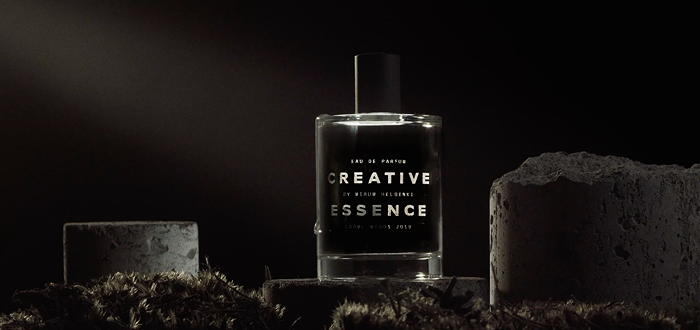
Posted By: Alex - Sat Aug 24, 2019 -
Comments (0)
Category: Advertising, Perfume and Cologne and Other Scents
1904 Baby Parade
Children should be forced to do this nowadays.
Posted By: Paul - Sat Aug 24, 2019 -
Comments (3)
Category: Parades and Festivals, Babies and Toddlers, Children, 1900s
August 23, 2019
Cremain Library
Shinjuku temple, located in Tokyo, is an ultra-high-tech Buddhist temple and cemetery. From Icon Magazine:
image source: byakurengedo.net
Sounds expensive. Scattering ashes seems to me like both a cheaper and better option.
Posted By: Alex - Fri Aug 23, 2019 -
Comments (1)
Category: Death
Mystery Gadget 80
What's happening here?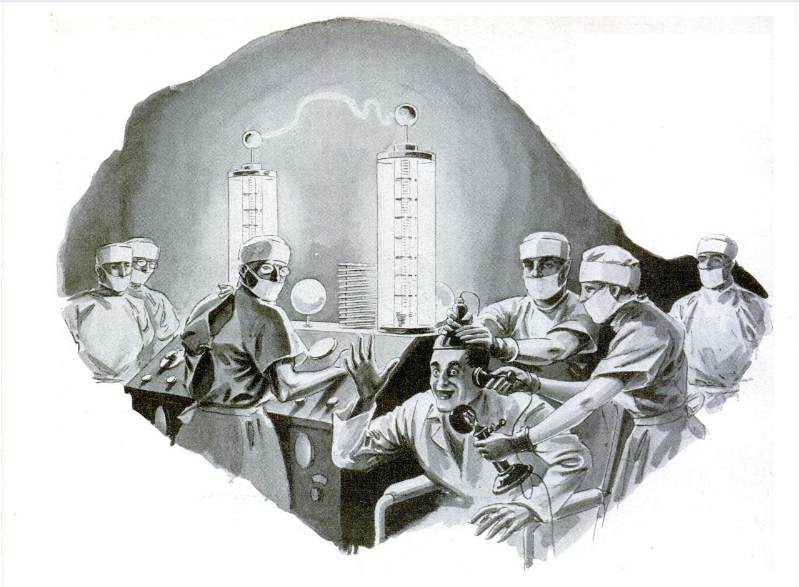
Answer at the link.
Or after the jump.
More in extended >>
Posted By: Paul - Fri Aug 23, 2019 -
Comments (3)
Category: Technology, 1930s
August 22, 2019
Every body needs milk
In 1969, the dairy industry launched an advertising campaign with the slogan, "Every body needs milk."In Oregon, the marketing team decided to conduct an experiment to find out whether showing more skin on a billboard would attract more attention. To do this, they created two different versions of an image. Both showed an attractive young woman lying down, feeding milk to a kitten. But in one version she was wearing slacks and a long-sleeved blouse. In the other, she was wearing a bikini.
It took me a lot of searching, and I wasn't able to find very good-quality copies, but I believe these are the two different billboard scenes:
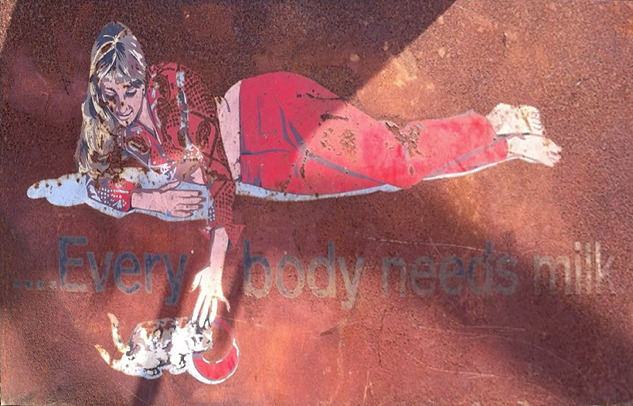
Source: Flickr
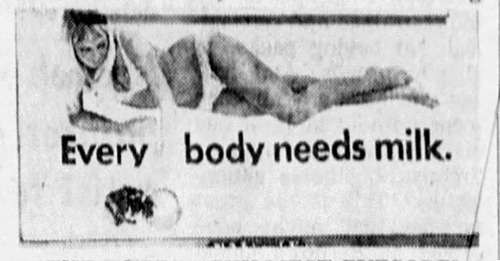
Minneapolis Star - Feb 20, 1970
So, did one billboard attract more attention than the other? The marketers surveyed 231 teenagers and concluded that there was "no indication that the amount of clothing made any difference in the awareness."
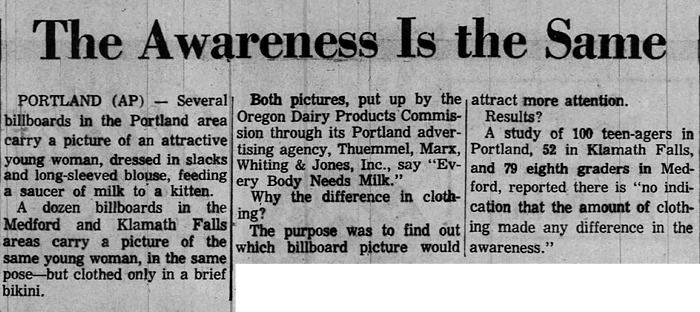
Salem Capital Journal - May 6, 1970
That was their conclusion, but I'm not sure I believe them, because the rest of the marketing campaign focused heavily on bikini-clad models. Two examples below.
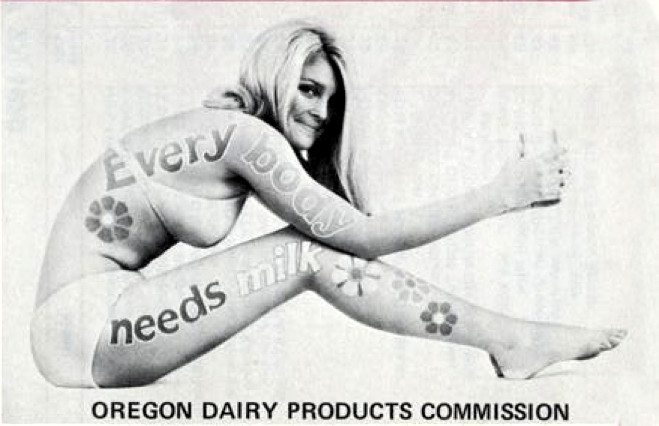
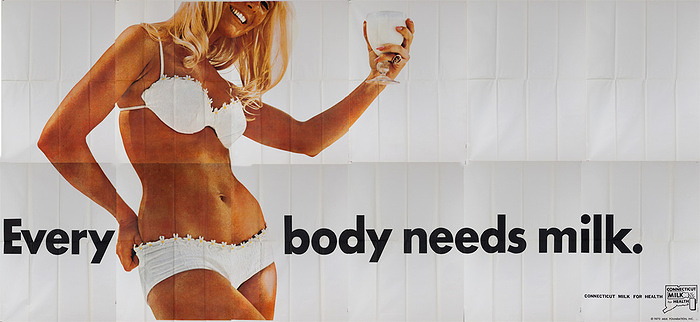
They even made it possible to buy the bikini-themed images as a poster and towel. Which suggests the bikini billboards did attract more attention.
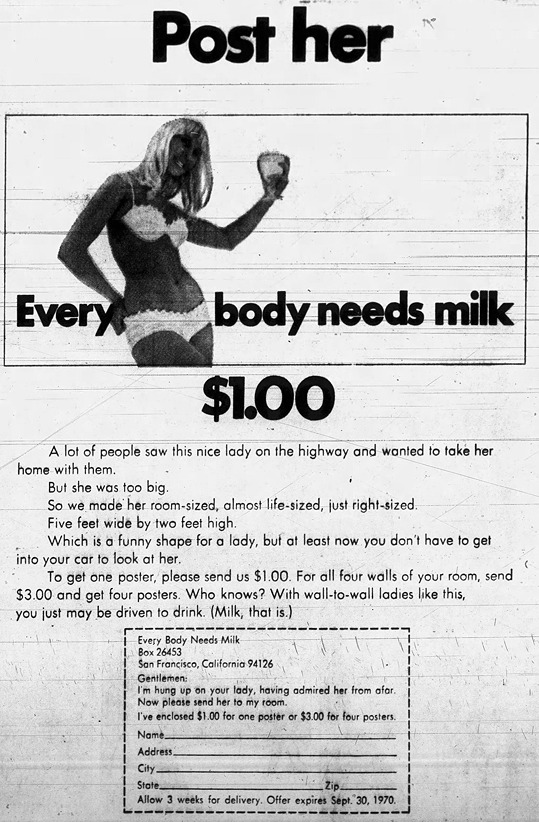
Oakland Tribune - May 24, 1970
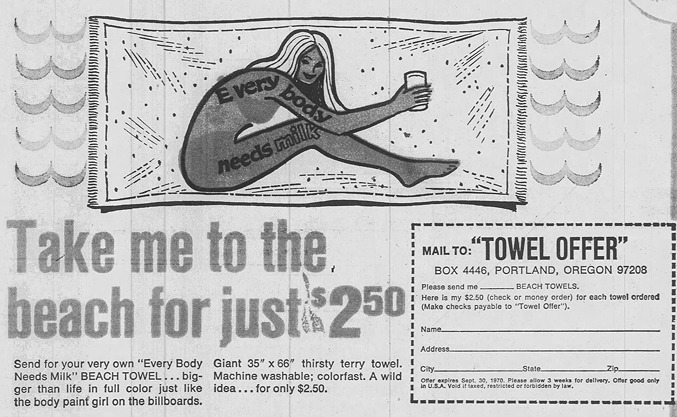
The Capital Journal - June 3, 1970
Posted By: Alex - Thu Aug 22, 2019 -
Comments (4)
Category: Advertising, 1970s, Billboards
Crazy Cow Cereal
Wikipedia page.
Posted By: Paul - Thu Aug 22, 2019 -
Comments (1)
Category: Anthropomorphism, Excess, Overkill, Hyperbole and Too Much Is Not Enough, Food, Advertising, Corporate Mascots, Icons and Spokesbeings, 1970s
| Get WU Posts by Email | |
|---|---|

| Who We Are |
|---|
| Alex Boese Alex is the creator and curator of the Museum of Hoaxes. He's also the author of various weird, non-fiction books such as Elephants on Acid. Paul Di Filippo Paul has been paid to put weird ideas into fictional form for over thirty years, in his career as a noted science fiction writer. He has recently begun blogging on many curious topics with three fellow writers at The Inferior 4+1. Chuck Shepherd Chuck is the purveyor of News of the Weird, the syndicated column which for decades has set the gold-standard for reporting on oddities and the bizarre. Our banner was drawn by the legendary underground cartoonist Rick Altergott. Contact Us |

